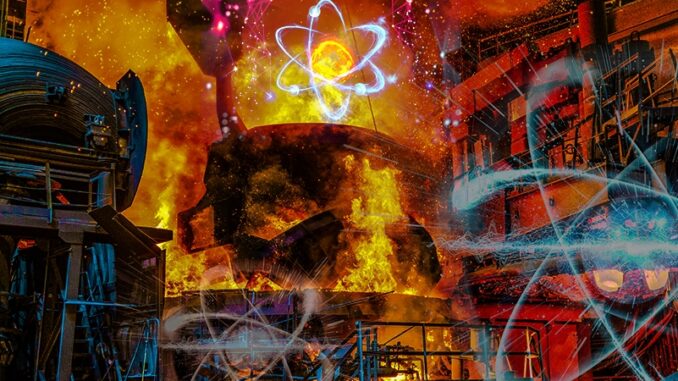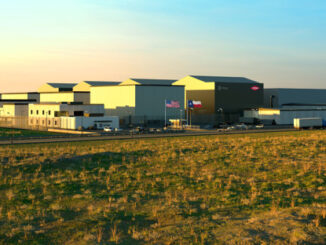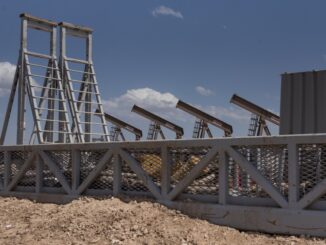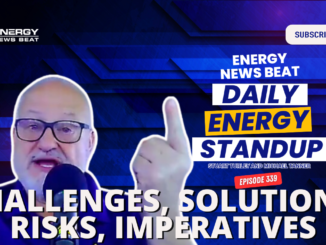
In my latest article for The Telegraph, I discuss the latest US Department of Energy (“DoE”) de-carbonisation liftoff report covering eight industrial sectors: chemicals, refining, iron & steel, food & beverage processing, pulp & paper, cement, aluminium, and glass. The DoE is concerned that these hard-to- de-carbonise sectors are lagging behind the rest of the US economy in the drive to net zero, and that “the time is now” to leverage the Bipartisan Infrastructure Law and the Inflation Reduction Act to change that. It believes these frameworks provide the necessary tools to deliver on emissions reduction goals while creating lots of new American green jobs, albeit at a significant cost – the price tag for reaching net zero across these sectorsby 2050 could exceed US$ 1 trillion.
Focus on unicorn solutions
As expected, the report goes long on unicorn solutions such as carbon capture and storage (“CCS”) technology, and hydrogen, claiming that “de-carbonisation levers with high abatement potential include hydrogen, CCS, and industrial electrification supported by clean electricity sources”. I refer to these as “unicorns” since to all intents and purposes they don’t exist. If course the element hydrogen exists, but there is currently no significant infrastructure to enable its use in the energy sector.
The DoE assumes that Regional Clean Hydrogen Hubs will emerge, and is providing US$ 1 billion of funding to “help form the foundation of a national clean hydrogen network aimed at reducing emissions from energy-intensive sectors”. The sheer scale of the work required to develop a national hydrogen infrastructure is mind boggling – it is far more likely that hydrogen electrolysers will co-locate with industry and some clean electricity source (either nuclear or renewables) rather than national-level infrastructure emerging, particularly when the fragmented nature of existing gas and electricity networks is taken into account.
And as I have pointed out time and again, the large-scale use of carbon capture to date as been confined to hydrocarbon production and processing, whether that is enhanced oil recovery, methane processing or ethanol production. Without these fossil fuels, the economics of carbon capture do not stack up. The handful of projects in the power sector have been more expensive and achieved lower capture rates than expected and have for the most part closed. While the DoE repeatedly refers to CCS as “least-cost de-carbonisation pathway” it does acknowledge that outside the area of natural gas processing, carbon capture has yet to be implemented at scale in the US.
Carbon capture would also require significant national infrastructure, with pipelines needed to remove the captured carbon dioxide and take it off to a storage site. Although there is some talk of utilisation, even the DoE considers this to be too speculative to give it any weight at this stage. The US does not have a national electricity grid, and its natural gas pipelines are operated by different regional operators, with pricing at a couple of dozen different gas hubs across the country. It seems pretty unlikely that integrated national infrastructure will be developed for either hydrogen or carbon dioxide given all the state and city interests that would need to be satisfied. And even if that could be done, it would require laying an awful lot of new pipes, each one costing money and likely facing opposition from a public typically hostile to new pipelines.
Another unicorn is industrialised electrification – something which is very easy to say but far harder to actually do. While factories can install solar panels and batteries it would be difficult and expensive (and potentially take up too much space) to deliver secure 24/7 power at sufficient scale to satisfy these industrial needs. Glass furnaces for example operate at 1,100 – 1,300 oC, and must have a continuous supply of energy to maintain these temperatures – allowing them to cool too rapidly can destroy the furnace requiring a total re-build. An eight-hour power interruption would be catastrophic. Of course, they can be supplied with electricity from the grid, but US power grids are increasingly unreliable as policy-makers rush to close fossil fuel generators, and electricity is a much more expensive option than cheap US shale gas.
Small modular nuclear reactors are a more credible solution
A key solution electrification is the use of nuclear power. Nuclear is enjoying something of a renaissance in the US (and elsewhere) as policymakers recall that it is both zero carbon and reliable – large amounts of energy can be produced from small sites, without needing to worry very much about the weather, particularly if sea water is used for cooling. Nuclear reactors can also produce heat, sometimes at high temperatures, which is essential for a lot of industrial applications.
Companies such as Dow Chemicals are exploring the use of small, advanced reactors (“SMRs”) to deliver high temperature heat to their sites. Dow is working with X-Energy to deploy an advanced reactor to provide process heat and power at its UCC Seadrift Operations manufacturing site in Texas, by about 2030. The companies are preparing a construction permit application to the US Nuclear Regulatory Commission, in the hope of starting construction work in 2026.
The Seadrift site covers 4,700 acres and manufactures more than 1,816 tonnes of materials per year for use in food packaging, footwear, wire and cable insulation, solar cell membranes and packaging for pharmaceutical products. Dow expects that the project will reduce the site’s emissions by about 440,000 MT of carbon dioxide equivalent per year, through the installation of four Xe-100 high-temperature gas-cooled reactors, delivering 320 MWe, on a roughly 30-acre site. The reactors can provide baseload power or support industrial applications with 200 MW thermal output per unit of high pressure, high temperature steam.
“Advanced nuclear has attractive advantages over other sources of clean power, including a compact footprint, competitive cost, and enhanced power and steam reliability,”– Jim Fitterling, Chairman and CEO of Dow Chemicals
Nuclear giant Westinghouse is currently seeking to licence an even smaller reactor technology, the 5 MW eVinci which it hopes will be able to be delivered to site fully fuelled in a sealed unit which is intended to be “plug-and-play” with industrial operations. Westinghouse is targeting an on-site installation process of just 30 days, which, if delivered, would revolutionise the industry. The reactors would operate for around 8 years before being taken off-site for re-fuelling, leaving no waste behind.
The technology is a heat pipe reactor which Westinghouse describes as more of a nuclear battery than a generator. The core design is built around a graphite core, with channels both for heat pipes and TRISO fuel pellets. Hundreds of passive in-core heat pipes are intended to increase system reliability and safety. As the colling is passive, there are no pumps to circulate water or gas. The reactor’s heat pipes replace the reactor coolant pump, reactor coolant system, primary coolant chemistry control and all associated auxiliary systems.
Pipes embedded in the core transfer heat from one end to the other, where it is captured in a heat exchanger. For cooling, each heat pipe contains a small amount of sodium liquid as the working fluid to move heat from the core and is fully encapsulated in a sealed pipe. Although the use of heat pipes in nuclear reactors is new, liquid metal heat pipe technology is mature. According to Westinghouse, there is no need to replenish or circulate the sodium as it is completely sealed in the heat pipes.
Earlier this year, Westinghouse produced its first prototype heat pipe, and hopes to have a test reactor operating in 2026.
While these new technologies still require approval from the Nuclear Regulatory Commission, momentum is building.
Improving process efficiency and cutting energy waste
Another key solution identified by the DoE is the “low-hanging fruit” of “energy efficiency”. This widely mis-used term actually refers to losses when converting one form of energy to another although it is commonly, incorrectly, applied to reductions in energy wasted through poor insulation among other things. Both of these are relevant to industrial de-carbonisation: conversion losses can be significant in energy intensive industrial processes, and more can be done to reduce energy lost through waste heat, for example by capturing it for use elsewhere.
These improvements are ones that could be considered irrespective of climate goals. While in an era of cheap natural gas US industries may see less need for reducing energy waste, it is a socially responsible move, and one which will pay dividends should gas become more expensive or its use be restricted. After all, President Joe Biden is famous for wanting to “end” fossil fuels.
Low regret solutions will lead the way
The DoE believes that early movers could capture significant benefits, but there is no mention of the prospect of significant losses if they invest in technologies that don’t work or are over-taken by better alternatives. The DoE wants the US to lead the world, but businesses are likely to be more cautious, and although some carbon reduction investments might be funded by the state through subsidies or tax rebates, but what about the costs of removing or replacing equipment that doesn’t work, or is rendered obsolete by superior solutions down the line?
Businesses are likely to prioritise low regret solutions that do not depend on unproven technologies. The reduction of energy waste has clear benefits here, as does the wider adoption of nuclear power, and the potential use of small on-site reactors. Although some of these are unproven, such as the Westinghouse micro reactor, most SMRs leverage existing nuclear technologies, and are far less speculative than the proposals for CCS or hydrogen. And with reliability problems in US power grids growing, independent access to a reliable, non-weather-dependent energy source would be a huge advantage.
The single most effective measure the Biden Administration could take would be to oil the wheels at the Nuclear Regulatory Commission so that new nuclear technologies can be approved much faster and at less cost than is currently the case. SMR developer Nu-Scale reports that the licencing process for its reactor ran from 2008 to 2020, cost half a billion dollars and generated around two million pages of documentation. This is excessive by any measure, and needs to be slimmed down if the benefits of SMRs are to be realised. Collaboration with trusted international regulators so each new technology does not have to go through separate licencing in each country would be a great place to start.
On-site nuclear generation will avoid the need for expensive nation-wide pipeline infrastructure, betting on unproven technologies or relying on increasingly unreliable power grids. And since industrial sites are already hazardous, the question of public acceptability for on-site nuclear will likely be easier to solve. This is where the real opportunity for global leadership lies, but only if policy-makers have the imagination to realise it and clear the regulatory path.
Watt-Logic



